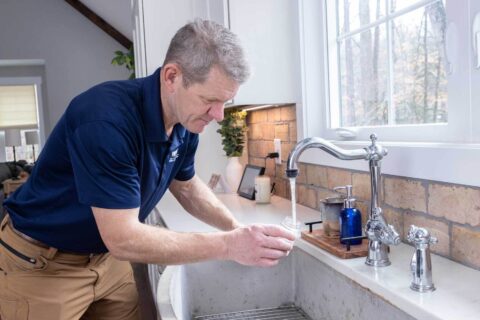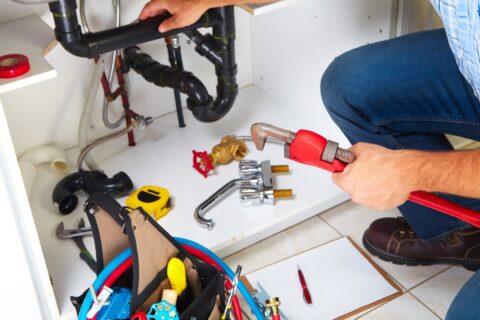Emergency Furnace Repair Services | 24/7 Heating Solutions | One Hour
Key Takeaways
-
How to recognize emergency furnace issues: Most people know when their furnace is probably in an emergency state because of sudden or unusual noises, odd smells, loss of heat, poor airflow, or system alerts.
-
For safety first, turn off the furnace and leave if you smell smoke or gas, and keep carbon monoxide detectors on.
-
Do some simple system checks, like checking your thermostat settings, inspecting your air filter and checking if your breaker is tripped before you call in a pro.
-
Select trusted certified HVAC technicians — verify certifications, read reviews and be there 24/7 for emergency repairs.
-
Know the economics of emergency repair: repair costs, insurance coverage, and whether routine maintenance or emergency repair saves you money in the long run.
-
Speak with HVAC experts to compare the advantages of furnace repair and replacement, considering age, efficiency, and estimated savings on your energy bills.
Emergency furnace repair refers to hasty repairs conducted to bring back warmth in case a furnace suddenly breaks down. Most of us require these repairs when cold weather arrives, and a furnace failure can create tension and misery at home or in the office. Typical issues such as no heat, strange noises, or short cycling. Emergency furnace repair pros like the ones at FACTS can quickly stop pipes from freezing and ensure the air indoors is safe by fixing leaks or electrical faults. Most emergency repairs apply to both gas and electric furnaces. Dependable repairs have quick response, transparent pricing, and work on all major brands. To maintain easy repairs and low costs, frequent inspections and cleaning aid in identifying problems early. Read below for emergency furnace repair steps, alternatives, and advice.
Emergency Indicators
Emergency furnace problems don’t usually provide a lot of notice. Timely intervention begins with recognizing the key danger signals. Observing these warning signs can prevent minor issues from escalating into system-wide crashes or health hazards.
1. Strange Noises
Banging or rattling loud noises coming from the furnace can indicate that parts are loose or something is broken inside, typically signaling mechanical problems that may require emergency assistance. Squeals can sometimes emanate from a worn blower motor or slipping fan belt, both of which can ratchet up your energy bills if neglected for long.
Hissing is typically associated with gas leaks or pressure issues—both hazardous, particularly in conjunction with a blue furnace flame, as this can indicate incomplete combustion or a significant fault. Clicking noises, especially if they’re coming from the ignition vicinity, can indicate electrical or ignition problems that deserve rapid inspection for safety purposes.
2. Odd Smells
If you smell anything burnt, it can indicate the furnace is overheating or wires are burning, which can be a potential fire hazard. A sulfur or rotten egg smell is the most indicative of a gas leak and requires immediate response—open windows and get assistance immediately.
Mold or dust odors frequently indicate grimy air filters or dust accumulation. This can reduce air quality and cause respiratory issues, particularly for allergy sufferers. Chemical odors can arise in the event of a combustion issue or leak of other harmful substances.
3. No Heat
If the furnace won’t heat, begin with your thermostat to ensure its set properly and receiving power — an easy fix. If they are, look for blown fuses, tripped breakers, or severed gas supply — all of which can cause a loss of heat.
If none of these steps does the trick, your issue might be large enough to require emergency repair, especially during the colder months when comfort and safety are on the line.
4. Poor Air
Dirty air filters can choke airflow – check ’em monthly! Blocked vents or ducts can prevent warm air from circulating through the area. Uneven heating in your home is an additional indicator, as is fragile airflow from your vents.
Either of these indicators can be a warning that the furnace is on its last leg.
5. System Alerts
Emergency indicators! Warning lights or error codes on the furnace panel indicate a particular fault and must not be ignored. Smart thermostats can notify of error conditions. If the carbon monoxide alarm sounds, evacuate and secure emergency assistance. Routine maintenance allows you to identify these problems early, before they turn into emergencies.
Immediate Actions
Fast action in a furnace emergency can minimize risk and damage. Being safe, checking the system and knowing when to call an expert – it’s all important.
Safety First
First, shut off the furnace at the breaker to kill power. This avoids additional harm or hazards, particularly if you observe smoke or detect the scent of gas. Carbon monoxide detectors must be functional and frequently tested – leaks are silent and lethal.
Create a checklist for emergencies: shut off power, check detectors, clear exits, and have emergency contacts ready. Train everyone at home what if the furnace goes, show ’em where breakers and detectors are. Stay away from space heaters for extended durations—they can catch fire if misused or left unattended.
System Check
Check the furnace for damage, burnt wires, or blocked components. A dirty air filter will stall airflow and shut new systems with safety controls—replace it if it looks clogged. For gas furnaces, check to see if the pilot light has gone out. Occasionally, everything needs a ‘kick in the pants’ aka a reset — power them down at the breaker for five minutes and power them back on — aids in fixing minor bugs.
See if fuses are blown or breakers tripped. Ensure vents and registers are unobstructed, and no airflow is impeding within 0.6 m (2 ft) of the unit. For electric units, verify the air is warm to ensure the heating element is functional.
Professional Call
|
Step |
Details/Example |
|---|---|
|
Find a service |
Search for licensed, insured local emergency repair firms |
|
Call for help |
Share the problem, symptoms, and what you’ve checked |
|
Request estimate |
Ask for a price range before the technician visits |
|
Ask about experience |
Confirm they have fixed similar furnace problems before |
Tell the technician everything—odd sounds, odors, when the trouble began, what you attempted. It saves trips and helps them bring the correct equipment or parts. Be sure to always request a flat cost estimate, and inquire if the company has worked with your furnace model in the past.
Final Steps
Keep notes on what you did.
Store emergency numbers in your phone.
Monitor the air for gas smells.
Evacuate if things feel unsafe.
Underlying Risks
An incorrectly working furnace can pose actual risks far beyond a cold evening. Neglecting weird signs such as rattling, the scent of gas, or the unit blowing cold air can cause you bigger issues and bigger bills. For example, if your furnace clicks or rattles, it may indicate a worn or loose part, which has the potential to escalate a quick fix into a big repair if delayed. Even something as simple as short cycling—which is when the furnace starts and stops too often in a short period—indicates something is wrong and requires immediate attention.
Carbon monoxide leaks, obviously, are a top worry with busted furnaces. Carbon monoxide is an invisible, odorless gas — but it’s deadly. Most areas mix mercaptan into natural gas, making it smell of rotten eggs, so leaks can be identified promptly. Still, not all leaks smell and the health risk is significant. Inhaling this gas may result in headaches, dizziness, or fatality. Operational CO alarms are critical to safety, providing a strong warning if levels rise and assisting in a rapid escape.
Electrical faults are another big risk. Wires or electrical components that deteriorate or fail can ignite fires or disrupt the operation of the furnace. Electrical problems are responsible for approximately 43,000 house fires annually and hundreds of deaths. That’s why any flickering lights, burnt smells or random shut-offs need to be checked immediately. If unattended, what begins as a flicker may morph into a blaze or fry the furnace.
By passing up regular maintenance, such as replacing an air filter or getting annual inspections, you increase the chance of crisis issues. Dust and dirt can clog the system, wear it down, and cause it to overheat. Routine maintenance and prompt fixes can help things operate secure and slick, and reduce the likelihood of unexpected breakdown. Ultimately, little steps today can prevent big trouble tomorrow.
Technician Vetting
Locating an emergency furnace repair technician that’s right for you involves just a little bit of research before you let anyone near your system. Proper vetting cuts risks and guarantees you fast, persistent assistance.
Credentials
Begin the vetting process by seeing if your technician has recent certifications from recognized HVAC institutions. Certified professionals demonstrate that they understand how to work safely and repair a variety of furnace issues. Insist on viewing their actual license because this indicates that they conform to local standards of safety and competence.
A lot of reputable companies employ technicians that continue learning. See if the company puts any effort into continued training for its employees. This matters since furnaces and the ways to fix them are always changing. Brands recruit and retain good workers with histories of good, honest work. Reading this in reviews OR on their website makes you feel more confident about your decision.
Availability
Emergency repairs don’t have time to wait. Verify if the company repairs round the clock, 7 days a week, holidays and storms. Response time counts—a quality technician should arrive within hours to evaluate and repair the problem. Inquire about their typical response timeframe.
Certain suppliers might have a larger staff, so they can attend to more calls simultaneously. This can be crucial in winter or a cold snap when everyone’s heat may go out simultaneously. Make sure they’re transparent about potential additional charges for late night or holiday visits. Being aware of this upfront prevents surprises.
Guarantees
A reputable repair shop backs up their labor. Inquire about warranties or guarantees on the parts they utilize and their workmanship. If it breaks again after the repair, see if they’ll do callbacks or return visits to repair it – at no charge.
Good companies will often give written estimates, detailing what’s involved in the repair and what is guaranteed. See if they have a customer satisfaction guarantee, which says a lot about their willingness to do a job right and keep you safe and warm.
Recommendations
Ask buddies, relatives or neighbors if they know dependable emergency techs. Personal referrals can be useful, particularly if you’re in a new region or don’t know where to begin. Online reviews provide another means of vetting a company’s history and identifying potential red flags.
Repair Economics
The real price of emergency furnace repair. There’s a lot that goes into the ultimate bill, and choices today can impact costs for years. Knowing these pieces makes savvy decisions that play well with any budget.
-
Parts and replacement components
-
Labour charges and after-hours service fees
-
Complexity of the repair
-
Age and condition of the furnace
-
Additional services (cleaning, inspections)
-
Insurance coverage and deductibles
-
Potential for higher premiums after claims
-
Long-term cost comparison: repair vs. replacement
Cost Factors
Emergency repairs = high service fees, particularly after business hours. Even straightforward repairs, such as swapping out a thermostat or cleaning a blocked filter, can begin at $100. When repairs entail major parts or more time, such as a blower motor or heat exchanger, costs quickly escalate to $1,200+ or more. Labor is another huge factor—technicians bill extra for rush calls, and it all catches up fast.
Old furnaces often mean expensive repairs. Parts in old systems tend to be worn or even obsolete, driving up labor and parts costs. As one piece succumbs, others become strained and can buckle shortly thereafter. Such a cycle can tack on 5–15% to energy bills and generate multiple service calls. Sometimes, a complete system swap out, though costly in the short term, ends up being far more efficient economically in the long run—particularly if you’re working with a 10+ year old unit.
Insurance Impact
Homeowner’s insurance will occasionally assist with emergency furnace repairs, but it changes. It’s worth checking your policy and seeing what’s included. If you are going to make claims, document all damage with photos and notes.
Chatting with your insurer clears up what deductibles come into play and whether coverage is capped. Certain policies insure against damage from particular causes, such as fire or calamity, not wear and tear. Claim filing can boost your future premiums, too — so consider whether the payout outweighs the potential hike.
Maintenance vs. Delay
Regular tune-ups, which may run about $150 a year, can lengthen a furnace’s lifespan from 10 to 20 years. That’s a huge gap, given that swapping out a system runs in the $5,000 to $10,000 range on average. Distributing repair expenses throughout the lifetime of the system renders them small by comparison.
Procrastinating on repairs just contributes to expenses. Like a car, when one part breaks, the rest strain, increasing the possibility of additional failures. This results in costlier repairs and increased energy bills.
The Repair-Replace Dilemma
The Repair-Replace Dilemma, Selecting between repair or swapping out a furnace can be a difficult decision, especially during an emergency. After a breakdown, a lot of homeowners encounter the same big question–should they pay for a repair OR is it smarter to buy new? A lot rides on this call: the age and shape of your furnace, cost, efficiency, and even your comfort over the next few winters all matter.
Furnaces aren’t forever. If yours is more than 15 years old, it’s probably less efficient and may break down more often. Other repairs can patch up the issue, but if you’re calling for help every few months, those bills add up. Aging systems can burn more energy, yet don’t always maintain adequate warmth, which increases utility bills. Other times, a bandaid just kicks the can down the road, leaving you to confront the same issue once again too soon. In these situations, a new furnace might be the smarter option for your wallet and for your sanity.
Cost is a big consideration. A repair feels cheaper in the moment, but when you factor in repeat repair costs and inflated energy bills, a replacement starts to look better. Newer models have better energy ratings, which can translate to long-term savings. These systems are designed to operate more efficiently and consume less power, thus potentially lowering your bills in the long run. For a lot of us, the promise of less breakdowns and more comfort is worth the initial expense.
Here’s a simple look at what to weigh:
|
Factor |
Repair |
Replace |
|---|---|---|
|
Cost |
Lower upfront, higher long-term |
Higher upfront, lower long-term |
|
Age of Furnace |
Good for newer systems |
Better for older systems |
|
Energy Efficiency |
Usually lower |
Usually higher |
|
Frequency of Issues |
Might recur |
Fewer problems expected |
|
Time Needed |
Often quick |
May take longer |
|
Utility Savings |
Minimal |
Can be significant |
That’s why it can’t hurt to talk with HVAC pros who know what works for your space and needs. They can peek at your furnace, peek at your bills and help you do a cost benefit check. This way, you’re more likely to make a decision that suits both your house and your future plans.
Conclusion
Furnace issues are swift, and always at the worst moments. Simple inspections and wise decisions keep homes safe and cozy. Be on the lookout for strange odors, banging noises or no heat. Call a tech who can demonstrate real expertise and transparent pricing. Repairs that appear minor can swell if ignored, so quick repair is economical and stress-reducing. Most are confronted with deciding whether to patch or replace the entire unit. Consider age, expense, and safety to direct your decision. Every house and configuration is unique. For additional information or assistance, consult a trusted local professional. Be prepared for cold snaps with keeping up checks and repairs. Contact us for professional advice or service if required.
Frequently Asked Questions
What are common signs that my furnace needs emergency repair?
Odd sounds, burning odors, no heat or the furnace won’t come on – typical emergencies. These problems frequently require emergency servicing to avoid additional damage.
What should I do if my furnace stops working suddenly?
Start by inspecting your thermostat and power source. If those are, shut off the furnace and call a competent technician immediately. Don’t try and repair it yourself.
Are emergency furnace repairs safe to perform on my own?
No, emergency furnace repair service should always be done by a licensed professional. Rod yourself, or void your warranty, by trying to fix it on your own.
How do I choose a trustworthy emergency furnace technician?
Search for licensed, insured and experienced technicians. Do your homework– check reviews, request credentials, and make sure they have a transparent pricing policy before you hire.
What risks are involved if I delay emergency furnace repair?
Procrastinating on repairs may pose safety hazards, including carbon monoxide leaks or fire risks. It can cause costly damage and misery in your home.
How much does emergency furnace repair usually cost?
Rates depend on where you are, when it is and what kind of repair. Emergency services will typically cost more, but having a quote beforehand prevents surprises.
When should I consider replacing instead of repairing my furnace?
If your furnace is old, inefficient, or requiring expensive repairs, replacement can be a more economical and efficient choice in the long run.


